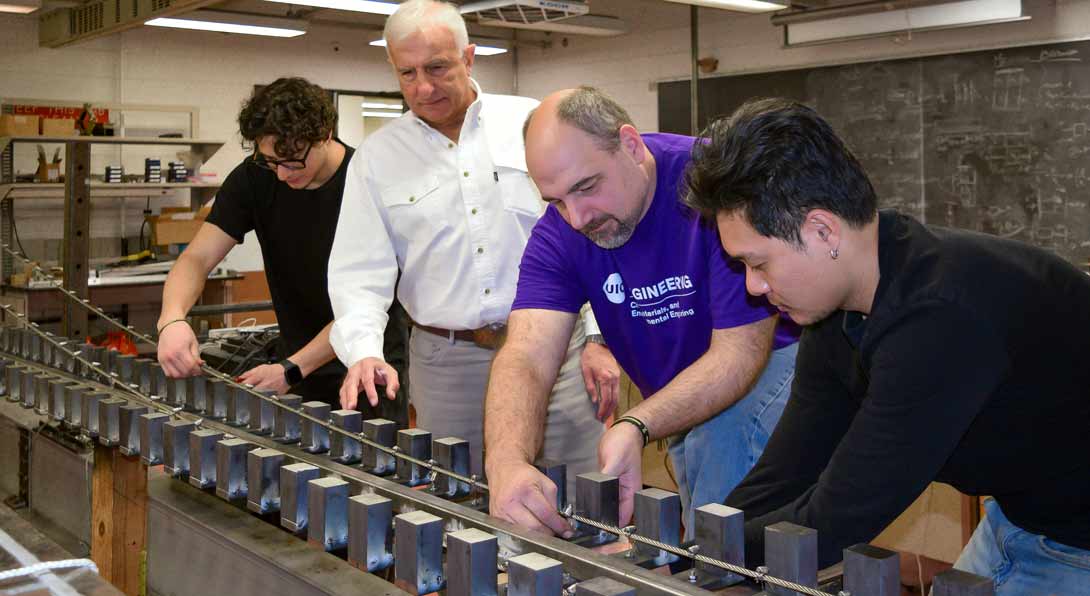Testing bridge safety

Introduction
When it’s completed, the Messina Strait Bridge will connect the island of Sicily to Calabria on the mainland of Italy and be the world's longest suspension bridge at more than 2.2 miles. It will be nearly twice as long as the 1915 Çanakkale Bridge in Turkey, which currently holds the record as the world’s longest suspension bridge.
The ambitious engineering project has created controversy as critics maintain the bridge is a risky undertaking in an active seismic zone.
In an effort to understand how earthquakes will impact the bridge, UIC Distinguished Professor and Christopher B. and Susan S, Burke Chair in Civil Engineering Farhad Ansari and his team built a model of the bridge to conduct experiments to understand how the real bridge may react to earthquakes.
Ansari’s team is made up of Instrument and Measurement Technician Todd Taylor, UIC PhD student Chengwei Wang, master’s students Salvator Marrocco and Kevin Visaggi, and Professor Gian Paolo Cimellaro from the Polytechnic University of Turin, Italy.
“The model is on a 1:265 scale with the dimensions, dynamic properties, and the way it shakes. We will shake it the same way the actual bridge shakes using data of actual earthquakes from that region plugged into our shaker system to see how it damages the cables and how it affects the bridge.” Ansari said.
In addition to the cables, the team will investigate the bridge's response to the soil's changing stiffness during the earthquakes. They will do this with springs that can simulate the soil characteristics.
“We want to research it to make sure this bridge survives. We want to know the performance of this bridge under different earthquake scenarios to get an idea of how to make the structure safer,” Wang said.